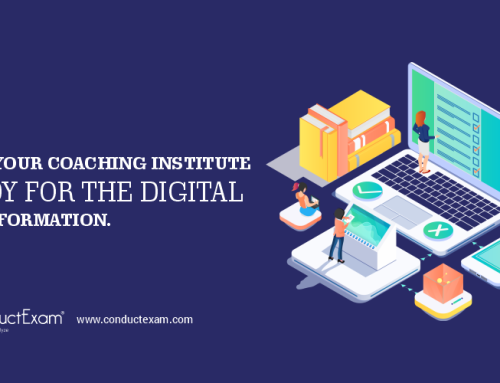Introduction
Educational institutes are always improving their study strategies by introducing new teaching methods. Virtual schooling has become fairly popular in today’s digital world.
For virtual schooling, schools or universities use an online learning platform. In virtual schooling, students attend class online and teachers communicate with them over the internet or online learning software using laptops, mobile phones, or computers.
Because virtual schooling makes positive development, students and teachers are familiar with using computers or mobile phones. With the use of an internet connection, students can study the topic from anywhere at any time without having to attend school.
Teachers can arrange the classroom at their own time using online learning platforms while virtual education is being implemented.
Virtual classes can attract students more than traditional classrooms. Because pupils are comfortable with digital devices and prefer to study on their phones or computers.
What is virtual schooling?
Virtual schooling is a teaching approach in which an educational institution holds online classes.
In virtual schooling, the home, bedrooms, gardens, or any other location can be used as a classroom. Virtual schools are not the same as traditional schools. Teachers and students must congregate in classrooms for study in physical schools.
Virtual schooling, on the other hand, eliminates the necessity for professors and students to walk to the classrooms to study. They can study topics and schedule assessments using online learning tools or programs.
Every educational institution today uses online education to spark students’ interest in their studies.
When students are interested in the topics, it is easier for them to focus on their studies. As a result, online teaching methods are being used in schools, universities, institutes, and government courses. Teachers or professors provide learning videos, study materials (in PDFs or documents files), and other resources to students participating in online learning.
There are now multiple mobile applications or software available that allow students to learn various topics anytime they wish.
Online learning, remote education, online school, online education, remote schools, distant learning, and other words are used to describe virtual schooling.
Effect of Virtual schooling in education
Even so, many schools, colleges, and coaching classes refuse to accept online education systems. Online learning, on the other hand, has a significant and positive impact on educational institutions.
1. Virtual classrooms
A classroom is a space where a teacher and students come together to learn about new topics or skills. The teacher and students in the virtual classroom, on the other hand, meet online to learn new topics.
Although they are not in the same classroom or face to face, they can converse with one another. While sitting at home, teachers can quickly solve the problems of their students. Furthermore, pupils prefer virtual classrooms over actual classrooms.
2. Learning opportunities
Students can learn fresh and distinct topics through online education. Pupils can save time because of not having to drive to class and instead spend it studying something new thanks to online classes.
As a result, when remote learning is implemented, students have a range of options for learning new topics through online applications or online courses.
3. Online assessment
Learners can’t enhance their skills if they don’t have any guidance. Teachers or professors do this by using online examination software or online assessment tools for creating tests or exams.
Teachers or professors set up the online test using various patterns, and students can take the test from anywhere. There are various assessment systems on the market that allow students to know their scores immediately after completing their tests.
What effect does virtual schooling have on teachers and students?
The impact of virtual schooling approaches on teachers and pupils is significant. The world of education is no longer limited to classrooms thanks to virtual learning. Students can now learn whenever and from anywhere they want.
For students who do not have enough time to attend actual classes, online schools offer a variety of options.
– Time management
In most cases, the administrator has trouble putting together the schedule. Administrators in virtual schools, on the other hand, use their time to plan lectures. The timetable is automatically organized with the help of online software, and the administrator can easily alter the timetable. As a result, virtual schooling makes it easier for teachers and students to organize their time.
– World view
Students can learn from a variety of universities using online learning. Virtual schooling allows students who live in India to learn from a US university. With the use of online classes or distance learning, a learner can learn from anywhere in the world while sitting at their desk at home.
– Immediate feedback of test
The educational institute start an online test for those who were taking online classes. The online examination software can be used to set up online exams. This application is used by students to take exams and receive quick results.
The student is aware of their mistakes and improve based on the outcomes due to the instant result capabilities.
– Digital skills
Everyone in the twenty-first century is familiar with mobile phones or smartphones. Teachers and students spend a lot of time on their phones. As a result, virtual education was created to help students and teachers enhance their academic performance by utilizing their digital skills. Pupils can be involved in their studies and enhance their abilities using the various elements of the education application.
Advantages of virtual schooling
Virtual schooling is now delivering benefits to students in terms of developing their skills and providing the greatest learning experiences.
1. Flexibility
The most well-known benefit of online learning is its ‘flexibility.’ Distance learning is another term for online learning. As a result, there is no need for students to gather in the classroom.
The compulsory students and teachers assemble in the classroom for learning in a regular classroom. However, in distance learning, students have more flexibility in terms of attending lectures and can also watch educational videos or study the delivered material whenever they have the opportunity. There is no time limit for gaining knowledge in virtual schooling. Learners appreciate the flexibility of the timetables and find it easy to stay focused on their studies.
2. Cost-effective
Because of its remote learning capabilities, virtual schooling is cost-effective. During physical classes, both professors and students must spend time and money traveling. However, when online learning methods are implemented, teachers and students save time and money from not traveling to class.
Because of its remote learning capabilities, virtual schooling is cost-effective. During physical classes, both professors and students must spend time and money traveling. However, when online learning methods are implemented, teachers and students save time and money from traveling to class.
3. Career advantages
When online learning is introduced, learners have access to a variety of online certificate courses. Learners can choose from a variety of intriguing subjects or topics and study them when they have free time.
Learners have many career opportunities available to them through virtual schooling or online classes. As a result, students can study their favorite subjects at their convenience and improve their abilities.
4. Independent learning
Students are free to use educational software to learn. Virtual schooling allows students to liberate themselves from learning offered information anytime they have time during the day. As a result of the pupils studying happily and freely, they can learn new subjects that interest them.
Also Read: How to make your coaching institute future-ready for digital education?
Conclusion
The digitalization of the world is the reason for virtual schooling in this case. In the field of education, virtual schooling is a huge step forward. To attract students, every school and institution is prepared to adopt online teaching methods. Teachers and professors can adapt their teaching approaches to keep students interested in their studies as the world changes. When students learn about issues that they are interested in, they are more likely to understand things.






testing
For a free demonstration, please contact us.
Such a great article
thank you for sharing
it is very helpful…keep blogging
We are glad to hear that!!